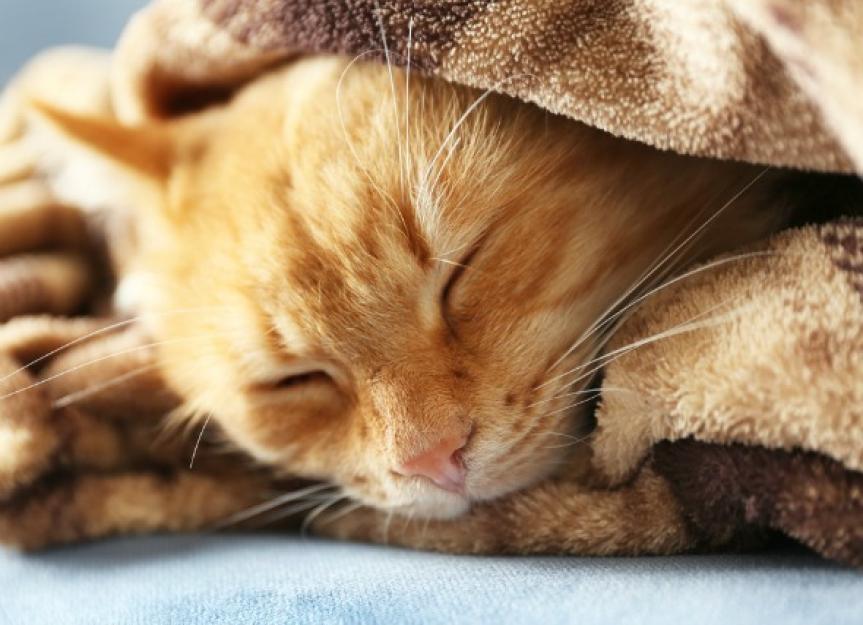Hypothermia in Cats
Low Body Temperature in Cats
Even with a fur coat, cats that are exposed to cold environmental temperatures, especially when wet, can result in hypothermia, which in cats is defined as a body temperature below 100° F. As the body temperature drops, the heart rate and other body activities slow and, if not treated quickly, can stop.
What to Watch For
Initially, your cat will shiver violently as his body attempts to generate warmth. The ears and feet will get noticeably colder as blood flow to these areas becomes restricted. If these areas get cold enough, frostbite will occur. As body temperature drops, your cat will become increasingly lethargic, his heart rate and respiratory (breathing) rate will slow and eventually he will slip into a coma.
Primary Cause
Exposure to cold air, especially with wet fur, or immersion in cool to cold water will lead to hypothermia with long enough exposure.
Immediate Care
- Move him to a warm environment and, if wet, dry him and wrap him in warm towels or blankets.
- Use hot water bottles to help warm your cat, but make sure it's not too hot. If you can’t hold it in your hands, it is too hot.
- Do not use an electric heating pad, as it could burn your cat, even on a low setting.
- If possible, check your cat’s rectal temperature.
- Take your cat to your veterinarian as soon as possible
Veterinary Care
Diagnosis
Low body temperature and history of exposure to cold are the common criteria for diagnosis. There are other ways your cat’s temperature can become below normal, so your veterinarian will carefully examine your cat to see if any of these other factors are contributing to the hypothermia.
Treatment
How intense the rewarming effort depends on your cat’s body temperature. For rectal temperatures slightly below normal (approximately 96° F to 100° F), drying your cat and covering him with blankets or warm towels is usually sufficient. For lower rectal temperatures, hot water bottles and similar external warming methods will be used as well. For severely hypothermic cats (rectal temperature below 90° F), warmed intravenous (IV) fluids, and even a warm water enema will also be used to bring your cat’s temperature back to normal. If there are any other factors contributing to the hypothermia, your veterinarian will address those as well.
Other Causes
冲击, overwhelming infection (toxic shock), anesthesia, malnutrition, and diseases of the hypothalamus (area of the brain that regulates body temperature) are all conditions that can cause hypothermia.
Living and Management
Once your cat’s temperature has stabilized, no further treatment is likely to be necessary in hypothermia cases due strictly to exposure to cold. However, you should continue to watch your cat over the next few days. If he's not completely back to normal by then, contact your veterinarian.
If there were other reasons for the low body temperature, your veterinarian will prescribe additional treatment such as antibiotics or improved diet. Be sure to follow your veterinarian’s directions.
Prevention
The best prevention is to be sure your cat stays inside your home during cold or rainy weather. If it is possible that he will be outside during bad weather, be sure he has access to a sheltered area that protects against wind, rain, and snow, and will stay dry inside. Put straw or old blankets inside to help hold warmth.
Help us make PetMD better
Was this article helpful?
